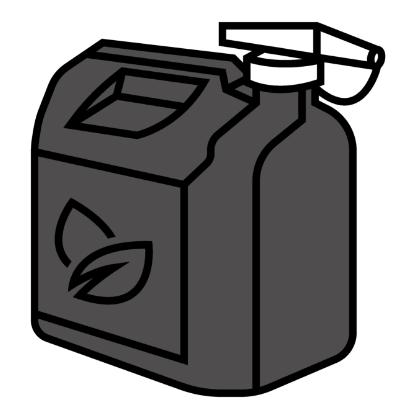CountryMark Biodiesel-Blended Fuels
From our perspective, there are a bunch of smart reasons to get behind biodiesel-blended fuels. Biodiesel is clean-burning, and it comes from renewable resources like soybean oil and animal fats (exactly the kinds of things our farmer-owners produce). All well and good, but how does it perform? If you know us, you won’t be surprised to learn we use only the best U.S. biodiesel we can find, and blend it to work better for you.
Beyond clean-burning.
Because they’re cleaner-burning, biodiesel blends reduce engine emissions, and improve air quality. But customers who fill up on CountryMark biodiesel-blended fuels also get a number of performance advantages. Among them, longer engine life due to increased lubricity and quicker engine starts from biodiesel’s high-cetane content.
Say goodbye to winter worries.
CountryMark is also committed to the winter operability of our biodiesel-blended fuels. Every gallon is specially treated with a customized mix of cold-flow improvers. In addition to using good fuel chemistry, we also train our fuel drivers to help ensure your storage tanks are properly maintained to head off potential cold-weather problems.
The right blend for you.
Ready to try a proven fuel that provides industry-leading power and performance? CountryMark biodiesel blends are available for delivery. Be sure to ask your local CountryMark-branded dealer about choosing the right biodiesel blend for you.
More biodiesel facts. In FAQ form.
Biodiesel is the name of a clean-burning, alternative fuel produced from domestic, renewable resources. Biodiesel contains no petroleum, but it can be blended at any level with petroleum diesel to create a biodiesel blend. It can be used in compression ignition (diesel) engines with no major modifications. Biodiesel is simple-to-use, biodegradable, nontoxic, and essentially free of sulfur and aromatics.
Technical Definition: Biodiesel, n.—a fuel composed of mono-alkyl esters of long-chain fatty acids derived from vegetable oils or animal fats, designated B100, and meeting the requirements of ASTM (American Society for Testing & Materials) D6751.
Engine manufacturers warranty up to a 20% biodiesel blend, which is 20 percent biodiesel with 80 percent petroleum diesel.
Biodiesel is registered as a fuel and fuel additive with the Environmental Protection Agency (EPA) and meets clean diesel standards established by the California Air Resources Board (CARB). Neat (100 percent) biodiesel has been designated as an alternative fuel by the Department of Energy (DOE) and the U.S. Department of Transportation (DOT).
Biodiesel is the only alternative fuel to have fully completed the health effects testing requirements of the Clean Air Act. The use of biodiesel in a conventional diesel engine results in a substantial reduction of unburned hydrocarbons, carbon monoxide, and particulate matter compared to emissions from diesel fuel. In addition, the exhaust emissions of sulfur oxides and sulfates (major components of acid rain) from biodiesel are essentially eliminated compared to diesel. Of the major exhaust pollutants, both unburned hydrocarbons and nitrogen oxides are ozone- or smog-forming precursors. The use of biodiesel results in a substantial reduction of unburned hydrocarbons. Emissions of nitrogen oxides are either slightly reduced or slightly increased depending on the duty cycle of the engine and testing methods used.
Biodiesel blends of up to 20 percent work in any diesel engine with no modifications to the engine or the fuel system. Biodiesel has a cleansing effect that may release deposits accumulated on tank walls and pipes from previous diesel fuel usage. The release of deposits may end up in fuel filters initially, so fuel filters should be checked more frequently at first. Ensure that only fuel meeting the biodiesel specification (ASTM D6751) is used.
No. Biodiesel has one of the highest “energy balances” of any liquid fuel. For every unit of fossil energy it takes to make biodiesel, 5.5 units of energy are gained. This takes into account the planting, harvesting, fuel production and fuel transportation to the end user.
In general, the standard storage and handling procedures used for petroleum diesel can be used for biodiesel. The fuel should be stored in a clean, dry, dark environment. Acceptable storage tank materials include aluminum, steel, fluorinated polyethylene, fluorinated polypropylene and teflon. Copper, brass, lead, tin, and zinc should be avoided. The DOE Biodiesel Handling/Use Guidelines can be found at www.biodiesel.org.
We have been running a CountryMark biodiesel blend in our fleet since 2005 and have experienced no issues. In fact, we find more benefits to using a biodiesel blend than anything else, including the lubrication quality that extends the life of our fuel injectors—and the fact that it is a cleaner burning fuel that is good for the environment.

